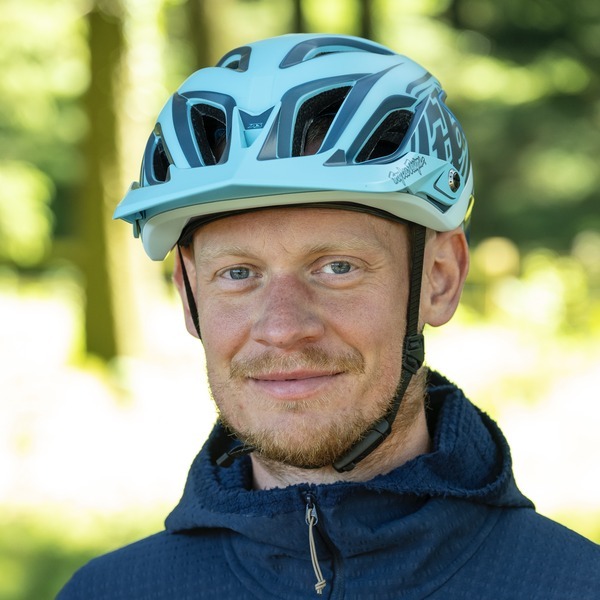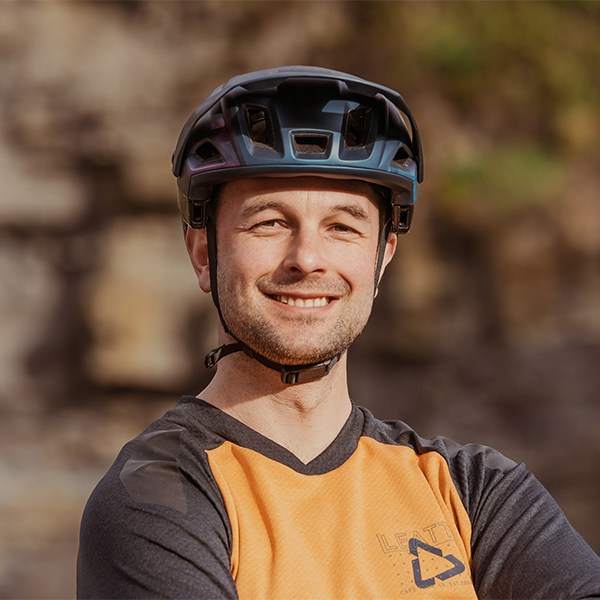Whether you’re a beginner or an expert mountain biker, at some point you’re going to want to buy a new bike.
This is a big investment, so you need to get it right, but finding exactly the right bike for your needs, budget and body can be quite complicated.
Fear not because we've been there, made all the mistakes and learnt from them so you don't have to.
Follow our five essential tips to make sure you end up with a sterling steed, not a rubbish ride.
1. Messing up the sizing

We have a comprehensive guide to mountain bike sizing, but this brief advice is a good starting point.
The biggest error you can make is to get the wrong-size bike. A frame that’s too small won’t fit your body dimensions well.
The bike will feel cramped when you’re stood on the pedals because the reach (the horizontal distance from the centre of the bottom bracket to the centre-top of the head tube) will be too short.
Another tell-tale sign is that the lower part of the dropper post may poke a fair way out of the frame.
On the trail, the handling is going to feel a bit ‘nervous’ (twitchy), and the bike won’t be quite as fast down something rough as you’d like.
On the other hand, if you buy a bike that’s too big for you, it’s going to feel unwieldy, you’re going to be stretched-out, and you'll struggle to turn and corner quickly.
This is almost as bad as a bike that’s too small.
A bike that’s the right size will feel at one with your body and you won’t find yourself trying to shift your weight one way or another to compensate for it being the wrong size.
With frame geometry figures sometimes sounding very similar from one bike to another, a good starting point is the sizing guide on the manufacturer’s website.
Hopefully, your height will put you bang in the middle of a given size range. Generally speaking, go with that size, unless you’ve read reviews that say the brand’s sizing is miles out.
If you fall between two sizes, we’d usually advise going for the bigger bike.
You can always put the seat down (as long as the seat tube is short enough) and fit a shorter stem, and the longer frame will provide calmer handling.
That’s better than trying to make a small bike feel bigger with a longer stem and the saddle miles up.
If you can, go to a demo day, where you can try the bike before you buy.
2. Being blinded by tech

If you’re an experienced rider or are willing to invest time in learning how to set up a bike, you can get amazing performance out of a super-techy machine with tons of suspension settings, adjustable geometry, programmable electronic gears and maybe a motor with tunable modes.
But if you’re a beginner, this may all be a bit overwhelming, and you may not be able to get the best out of such a high-tech bike.
In the worst-case scenario, if you twiddle the dials on the fork or shock the wrong way or for too many clicks, you could ruin the way your bike feels.
So, if you’re not interested in learning how it all works, going for something a little simpler – with only one dial on the fork, mechanical gears, good factory-set geometry and no electronics to worry about – might suit you better.
It’ll likely be a bit cheaper, too, and will potentially be easier to maintain.
3. Choosing an unsuitable type

Mountain bikes vary massively, from lightweight cross-country (XC) race bikes with 120mm or less of suspension travel to bomb-proof downhill (DH) bikes with 200mm-plus.
The type of terrain you’re going to be riding most will dictate what kind of bike will suit you best.
If you’re going to be riding mellow, chilled trails – bridleways or blue-graded singletrack – then a short-travel XC bike will suffice, and will help you shoot up the climbs.
At the opposite end of the spectrum, if all you’re interested in is bombing downhill, a long-travel DH bike is the way to go.
Most of us fall somewhere in the middle, which leaves us with a choice between a downcountry bike (around 125-135mm of travel), a trail bike (140-155mm) or an enduro bike (160-170mm).
Each of these will be able to tackle both steep ascents and rowdy descents, but generally, less travel equates to lighter weight, greater pedalling efficiency and a slight bias towards flatter trails and climbing, while more travel means more downhill control and stability.
That’s not always the case though – some bikes with less travel feel incredible on big, technical descents, while some bigger-travel bikes don’t. So, make sure to read our expert reviews.
4. Opting for the ‘wrong’ style of ebike

Electric mountain bikes can be roughly divided into two classes – full-power and lightweight (aka SL) eMTBS.
The latter have less powerful ebike motors and a smaller battery, and tend to feel more like a non-assisted bike, only with a little bit of a tailwind as you go uphill.
In contrast, the full-fat experience is about everything being turned up to the max. You get tons of power, enough battery capacity for lots of laps and a way weightier bike (as heavy as 29kg) that feels massively stable on the descents with loads of grip and control. However, it will leave you struggling if you get knocked off-line or need to brake quickly.
When making your choice, it’s worth considering your riding buddies – if they’re on ‘normal’ bikes, an SL may be a good choice, but if they’re on full-power MTBs, you’ll struggle to keep up unless you have one too.
5. Blowing your budget on the bike

Say you’ve got £3,000 to spend – we wouldn’t recommend you spend all £3,000 on the bike.
If it’s your first mountain bike, there are loads of things you’re going to need, such as a helmet and some knee pads.
You might want more kit too, if you’re going to be riding day in, day out. And, nine times out of 10, the bike you buy is going to need an upgrade to a set of the best mountain bike tyres.
Also, you’ve got to think about looking after the bike. If you break the chain or wear out the cassette, you’ll need money to replace it, so don’t spend every penny on the bike.
Remember, as well, that just because you’ve got the money, it doesn’t mean you should necessarily buy a top-of-the-range model.
As long as you’ve got disc brakes, a dropper post, a wide-ratio cassette and front and rear suspension, you’re going to have a great time, even on a lower-spec bike.

